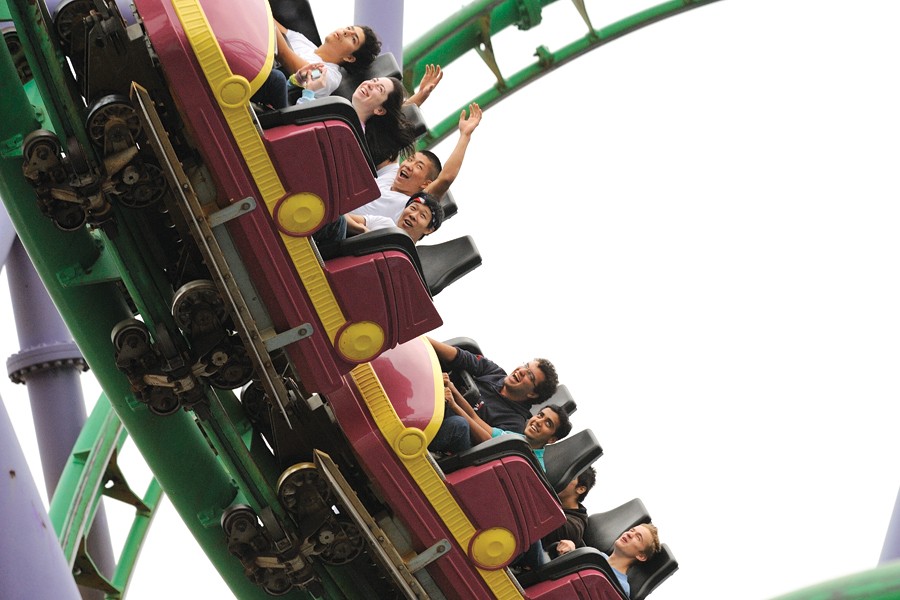"How many of you have paper in front of you? A pencil? A laptop? Get rid of it!" It's the start of the fall semester, and Professor Art Shoukas is giving a lecture on the cardiovascular system to a room of shocked first-year biomedical engineering students taking Freshman Modeling and Design. He developed the semester-long course—which has no textbook and no exams—to introduce first-year BME students to the world of hands-on research.
"In this class, our students don't study science—they make it," says Professor Eileen Haase, who has taught the class alongside Shoukas for 12 years.
This course has five design projects, the highlight of which is dubbed the "roller coaster experiment."
For the experiment, students take a field trip to Six Flags America in Upper Marlboro, Md., where they wear devices to collect heart rate and acceleration data on three of the park's most impressive rides: The Joker's Jinx, Superman: Ride of Steel, and the Tower of Doom.
Tom Bernstein says that Superman is his favorite. "Just before the drop is the most exciting part," he says on his class's late-October trip, predicting that data will reveal a peak in heart rate from sheer anticipation, independent of external forces.
Gabriela Frid predicts what happens next: "As the roller coaster plummets, heart rate will drop as body pressure drops, followed by a sudden increase in heart rate when the roller coaster reaches the bottom."
According to Haase, students learn more than physics and physiology from the roller coaster adventure. "Students learn to form a hypothesis, to develop an experiment, and to work as a team to solve research problems, whether in the lab or on a roller coaster."
Posted in Science+Technology, Student Life








